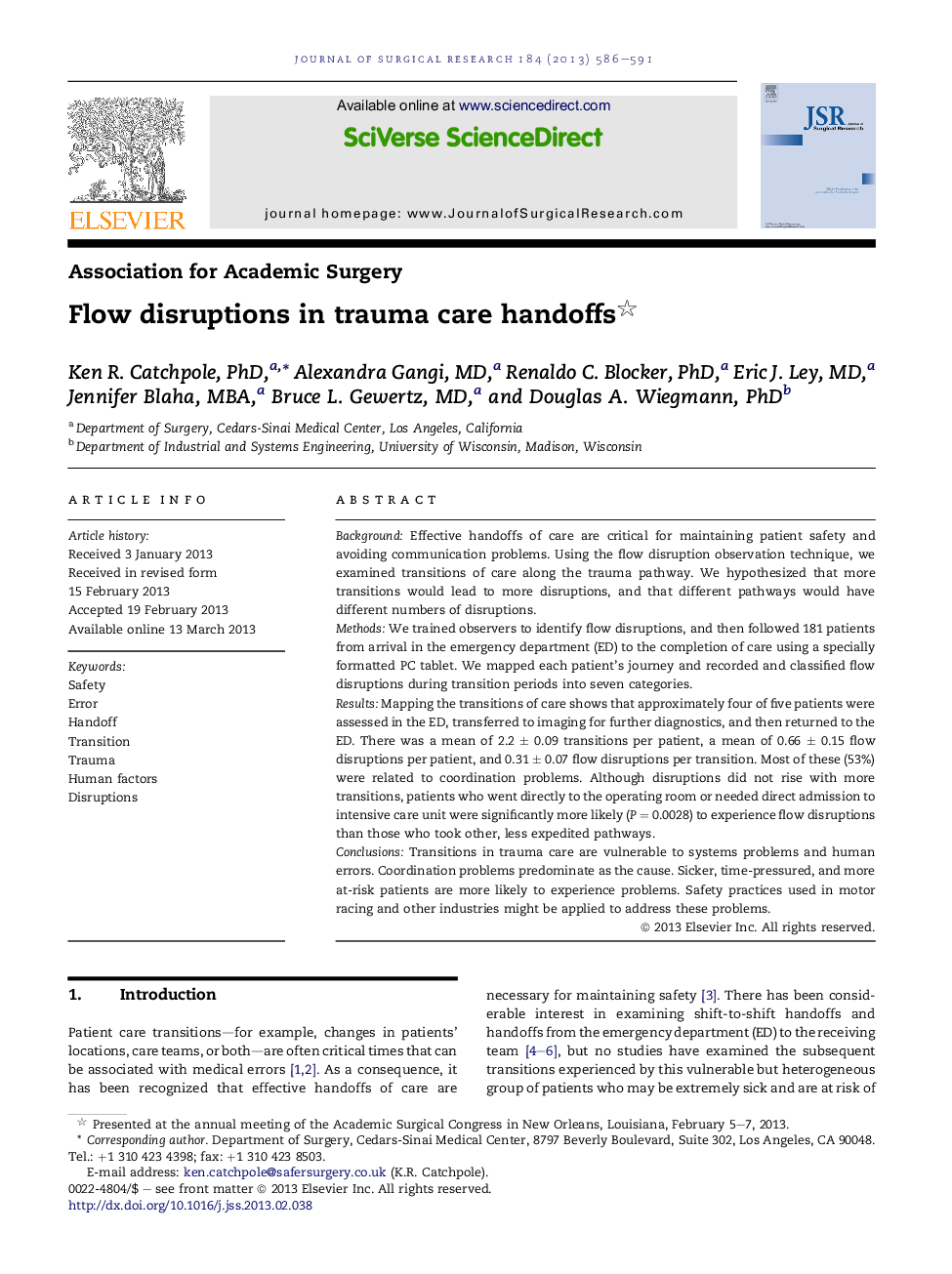| Article ID | Journal | Published Year | Pages | File Type |
|---|---|---|---|---|
| 4300655 | Journal of Surgical Research | 2013 | 6 Pages |
BackgroundEffective handoffs of care are critical for maintaining patient safety and avoiding communication problems. Using the flow disruption observation technique, we examined transitions of care along the trauma pathway. We hypothesized that more transitions would lead to more disruptions, and that different pathways would have different numbers of disruptions.MethodsWe trained observers to identify flow disruptions, and then followed 181 patients from arrival in the emergency department (ED) to the completion of care using a specially formatted PC tablet. We mapped each patient’s journey and recorded and classified flow disruptions during transition periods into seven categories.ResultsMapping the transitions of care shows that approximately four of five patients were assessed in the ED, transferred to imaging for further diagnostics, and then returned to the ED. There was a mean of 2.2 ± 0.09 transitions per patient, a mean of 0.66 ± 0.15 flow disruptions per patient, and 0.31 ± 0.07 flow disruptions per transition. Most of these (53%) were related to coordination problems. Although disruptions did not rise with more transitions, patients who went directly to the operating room or needed direct admission to intensive care unit were significantly more likely (P = 0.0028) to experience flow disruptions than those who took other, less expedited pathways.ConclusionsTransitions in trauma care are vulnerable to systems problems and human errors. Coordination problems predominate as the cause. Sicker, time-pressured, and more at-risk patients are more likely to experience problems. Safety practices used in motor racing and other industries might be applied to address these problems.
